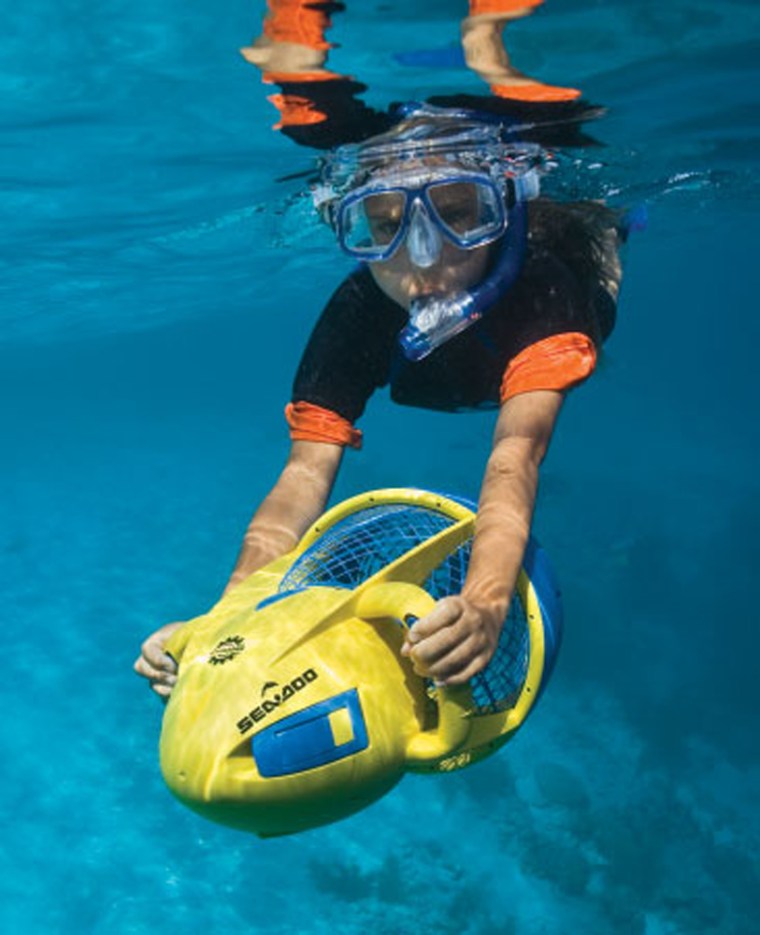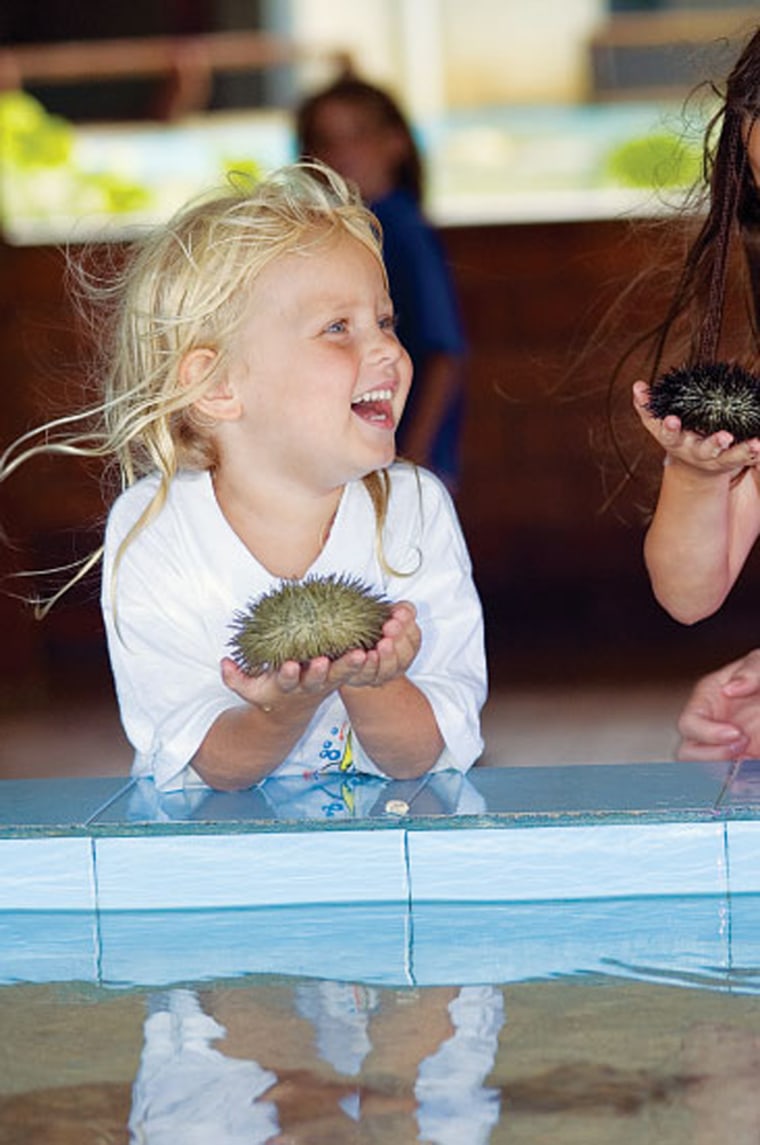I have three days before the kids join me in Curacao for Kids Sea Camp, and I’m in a decadent mood. I wasn’t in a decadent mood when I arrived – I was ready to explore. But as soon as I checked in at the Hotel Kura Hulanda, whose 65 restored buildings sit right in the middle of the Punda side of historic Willemstad, I had a thought that seldom passes through my discovery-seeking brain: I’d like to be pampered. Heck, I might even like to just stay at the resort, linger in the pool, check out the café, have a drink, read … maybe even daydream. I know – that’s heresy!
I’m not really sure what kind of slacker has taken over my body and given the boot to my restless, adventurous soul, but the imposter is currently well-entrenched. I’ve explored jungles, rainforests and barrier reefs, but I’ve never stayed in a World Heritage living museum – and that’s what Willemstad is.
I may have to re-evaluate.
So I muster some energy and walk a few steps from my lovingly renovated room to the Village Square, around which the Kura Hulanda complex is built. Essentially, the hotel comprises an eight-block walled village within the center of commerce and activity of Willemstad. There’s a News Café, shops, galleries, a museum, three restaurants, two pools and tranquil gardens that should help me focus on my newfound life of quiet contemplation, reflection and gentlemanly ease without breaching the envelope of the outer world. I settle at a table under the wide canopy of a flamboyant tree just as the great sidereal shift of day passes over the rooftops, transforming the sky’s blue hue to deep ginger to the silky twinge of twilight that heralds the appearance of the first sprinkling of stars. Somewhere in the middle of this spectacle a drink has arrived. As have people.
I strike up a conversation with a couple, Martin and Siobhan, on their second honeymoon. Turns out we all once lives within blocks of each other in London. Like me, they’ve yet to leave Kura Hulanda to see the island’s other charms. “It’s like a fairy tale here,” says Siobhan.
They ask what brings me to Curacao and I, stealing an ideal from the late 18th century that seems to fit the surroundings, tell them I was drawn here by gentlemanly leisure and poetic ease. For a moment, conversation stops.
“Congratulations, then,” replies Siobhan. “Join us for dinner?”
We jaunt off to the famous Astrolab Observatory Restaurant and dine alfresco in the Indian Marble Garden. Between the cured gravlax, pumpkin cream soup and grilled reef lobster with vanilla butter sauce, we start to feel expansive and happily continue to take advantage of the sommelier’s wine recommendations. My last memory of the evening is falling asleep next to a card that says “Sweet Dreams” that had been placed on my pillow. The next morning when I awake, I hope that I’m in my own room.
The Morning Reckoning
Sitting up in bed, I catch a glimpse of my dive gear brooding in the corner and in an obviously plaintive mood, the zipper untouched since my arrival. As I stare, I realize the “poetic ease” gig is up, so I grab the bag and head off to visit my friends Nolo and Monica Ambrosi at PADI 5-Star Ocean Encounters dive center.

Like me, they’re taking advantage of the quiet before the blitz of kids Sea Camp, of which they are a primary sponsor. They both decide to join me on the dive boat, and we go to one of my favorite critter dives, Small Wall. Here, in a sand patch a few fin kicks from the boat, the divemaster unearths a stark-white mantis shrimp that peers up at us from its perfectly round hole. I kick down to what is, literally, a small wall and settle in for a bit of slow-motion exploration. Curacao’s reefs practically writhe with life, especially the little stuff, so it’s best to take it slow. Me, I hardly move. It seems every time I pause, I notice a movement that turns into a whitespotted moray, a banded goby, a juvenile spotted drum or a Pederson cleaner shrimp bobbing in the curly twists of a corkscrew anemone. By the end of the dive I’ve probably covered a grand total of about 35 feet.
Between dives the boat heads over to Caracas Bay so we can explore Fort Beekenburg. The fort once protected the bay from such riffraff as 18th-century pirates, as well as from the French and the English. On the other side of the bay, the famous Tugboat sits in 20 feet of water, but after the break, we head off to Beacon Point.
Christian, one of Nolo and Monica’s two sons, loves to tell a story to divers about the “Beaconese Indians” who once flourished on Curacao. By the end of the sotry half the boat believes such people once lived on Curacao and gave this site its moniker, and I’m sure the notation has been duly entered in logbooks around the world (and now it’s in the pages of a dive magazine). Beyond the stories, though, Beacon Point has some nice patches of pillar coral as well as a collection of large orange elephant sponges that decorate the nearby drop-off. Purple trains of creole wrasse course over the reef here, and the site is a favorite for great barracudas and tornadoes of jacks. Dolphins often zip in to give divers a quick thrill.
Give Me Meat
That night I meet up with Monica, Nolo and Christian at a true locals-only restaurant. Well, it’s not really a restaurant – it’s more of a horse stable. With a big grill. And a bar. And lots and lots of meat. On top of it all, it’s only open on Fridays, and good luck getting a table if you arrive after 5:30 p.m. The chef’s not even a chef – he’s a graphic designer during the other six days of the week.
The place is called Equus (the equines will probably peek out of their stalls during your meal), and there are only two items on the menu: a skewer of I-don’t-want-to-quit-eating Argentinean beef and the likewise sumptuous chicken. You get a basket of bread and a garlic dipping sauce, and that’s it. After the first bite, you pretty much lose the desire to ever eat anything else for the rest of your life.
This has become one of my favorite places to eat in the Caribbean. The mere memory of eating at Equus makes me hungry. You’ll have to get to know a local to find the place, but it’s worth the effort of discovering your way to this hidden culinary gem.
Kids Gone Wild
The next afternoon, full of Argentinian beef and Kura Hulanda laissez-faire, I pick up my wife (Cindy) and kids (Ethan, 7, and Gillian, 4) at the airport and head off to the Royal Resorts condominiums next to the Curacao Seaquarium and Ocean Encounters, the gathering place for Kids Sea Camp. About 15 minutes after checking in, my kids pretty much disappear.
About three days into Kids Sea Camp Gillian sits next to me on the beach and proclaims Curacao her favorite place in the world. Then she runs off with her new friends to build sand houses for hermit crabs. Those are almost the first words she says to me during those three days.
She and my son, Ethan, have been absorbed by this phenomenon called Kids Sea Camp. The two of them had talked about Sea Camp every single night at dinner for about a month before we came, and I feared that their expectations might exceed the reality of this family dive adventure. It didn’t happen. They stay either I the water or immersed in the world of water from sunrise to bedtime. If they weren’t full-blown water rats before this trip, they’ve established their water cred during this ocean-centric family week.
Ethan goes crazy for SASY (a modified tank and BC that kids use to “dive” on the surface) and follows me around the Seaquarium lagoon like a bona fide diver, flashing me the OK sign every time I look up to see how he’s doing. The lagoon has a Plexiglas wall with holes in it for feeding big green sea turtles and equally large nurse sharks that like the same kind of free handouts. Ethan bounces back and forth between the two until it’s time to surface.
Seizing my chance to see the other end of the Sea Camp spectrum, I join the newly minted preteen divers on a reef dive with one of the aquarium’s sea lions and on their open-ocean dolphin-encounter dive. Although it’s odd to see sea lions in Curacao, the Seaquarium houses the SOS (Sea lions in Open Seas) program, which lets divers and snorkelers get close to these incessantly curious mammals. Pioneered by Chris Porter, this program’s ultimate goal is to train sea lions to aid in search-and-recovery missions. In the meantime, however, playing with visitors and hanging with divers in the open seas is a full-time job for these adorable creatures.
Throughout the week, we parents get to indulge in what is perhaps the best-kept secret in the Caribbean: the undersea world of Curacao. Cindy and I get to explore some of the Caribbean’s best wrecks – including the Superior Producer and a host of sunken tugboats – and a lineup of lush, healthy reefs with some of the biggest orange elephant ear, purple stovepipe and brown tube sponges you’ll see anywhere in the world. The sheer number of freaky little things that come out at night is incredible. Because Curacao is an arid island, the viz tends to stay north of 100 feet. Over the course of the week we fill our logbooks with dives at Director’s Bay, Blauwbaii, the Tugboat at Caracasbaii, Sandy’s Plateau, Car Pile, Saba, Fuikbaii and the house reef of the Seaquarium.
As a parent, only one disconcerting thing happens all week. During the beach bonfire night, there’s a live band. And whose young daughter is the first to get on stage and groove to the beat? Yep, mine: Gillian. Boy, am I in trouble when she gets older.
About this time, I’m struck by a profound moment of clarity. My days as a man of leisure and poetic ease have officially come to a screeching halt. But at least my family can keep coming to Curacao every year, where I can share one of my favorite corners of the Caribbean with them. By the time my kids become teenagers we’ll have the sea in common (if nothing else), and when I need solace – and I will – I’ll just sneak off to Kura Hulanda and have a few treasured moments of Old-World ease.
As the official publication of the is the magazine divers turn to each month to find out what’s going on in their world. Sport Diver is the ultimate source for up to date information on dive culture, equipment, travel, training and PADI Diving Society activities.
